Joint effects of CD8A and ICOS in Long QT Syndrome (LQTS) and Beckwith-Wiedemann Syndrome (BWS)
- PMID: 38845009
- PMCID: PMC11155187
- DOI: 10.1186/s13019-024-02804-w
Joint effects of CD8A and ICOS in Long QT Syndrome (LQTS) and Beckwith-Wiedemann Syndrome (BWS)
Abstract
Background: Long QT Syndrome (LQTS) and Beckwith-Wiedemann Syndrome (BWS) are complex disorders with unclear origins, underscoring the need for in-depth molecular investigations into their mechanisms. The main aim of this study is to identify the shared key genes between LQTS and BWS, shedding light on potential common molecular pathways underlying these syndromes.
Methods: The LQTS and BWS datasets are available for download from the GEO database. Differential expression genes (DEGs) were identified. Weighted gene co-expression network analysis (WGCNA) was used to detect significant modules and central genes. Gene enrichment analysis was performed. CIBERSORT was used for immune cell infiltration analysis. The predictive protein interaction (PPI) network of core genes was constructed using STRING, and miRNAs regulating central genes were screened using TargetScan.
Results: Five hundred DEGs associated with Long QT Syndrome and Beckwith-Wiedemann Syndrome were identified. GSEA analysis revealed enrichment in pathways such as T cell receptor signaling, MAPK signaling, and adrenergic signaling in cardiac myocytes. Immune cell infiltration indicated higher levels of memory B cells and naive CD4 T cells. Four core genes (CD8A, ICOS, CTLA4, LCK) were identified, with CD8A and ICOS showing low expression in the syndromes and high expression in normal samples, suggesting potential inverse regulatory roles.
Conclusion: The expression of CD8A and ICOS is low in long QT syndrome and Beckwith-Wiedemann syndrome, indicating their potential as key genes in the pathogenesis of these syndromes. The identification of shared key genes between LQTS and BWS provides insights into common molecular mechanisms underlying these disorders, potentially facilitating the development of targeted therapeutic strategies.
Keywords: Beckwith-Wiedemann syndrome; Biomarkers; CD8A; ICOS; Long QT Syndrome.
© 2024. The Author(s).
Conflict of interest statement
The authors declare no competing interests.
Figures

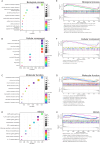
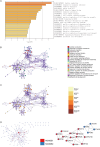
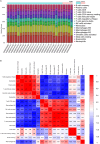
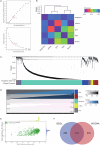
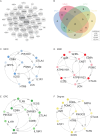
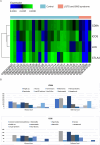
Similar articles
-
Beckwith-Wiedemann syndrome and long QT syndrome due to familial-balanced translocation t(11;17)(p15.5;q21.3) involving the KCNQ1 gene.Clin Genet. 2013 Jul;84(1):78-81. doi: 10.1111/cge.12038. Epub 2012 Nov 14. Clin Genet. 2013. PMID: 23061425
-
Mild Beckwith-Wiedemann and severe long-QT syndrome due to deletion of the imprinting center 2 on chromosome 11p.Eur J Hum Genet. 2013 Sep;21(9):965-9. doi: 10.1038/ejhg.2012.280. Epub 2013 Mar 20. Eur J Hum Genet. 2013. PMID: 23511928 Free PMC article.
-
Beckwith-Wiedemann syndrome with long QT caused by a deletion involving KCNQ1 but not KCNQ1OT1:TSS-DMR.Eur J Med Genet. 2023 Jan;66(1):104671. doi: 10.1016/j.ejmg.2022.104671. Epub 2022 Nov 17. Eur J Med Genet. 2023. PMID: 36402267
-
[Beckwith-Wiedemann syndrome].Nihon Rinsho. 2000 Jul;58(7):1511-4. Nihon Rinsho. 2000. PMID: 10921333 Review. Japanese.
-
Molecular biology of Beckwith-Wiedemann syndrome.Med Pediatr Oncol. 1996 Nov;27(5):462-9. doi: 10.1002/(SICI)1096-911X(199611)27:5<462::AID-MPO13>3.0.CO;2-C. Med Pediatr Oncol. 1996. PMID: 8827075 Review.
References
-
- Borjas Mendoza PA, Mendez MD. Beckwith-Wiedemann Syndrome. 2023. - PubMed
MeSH terms
Substances
LinkOut - more resources
Full Text Sources
Research Materials
Miscellaneous

